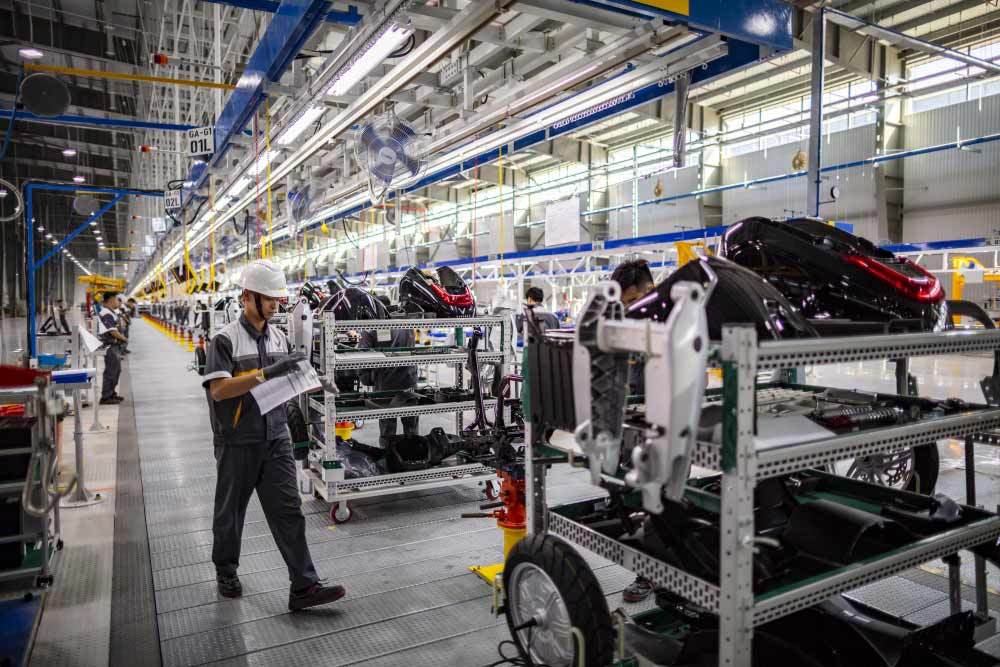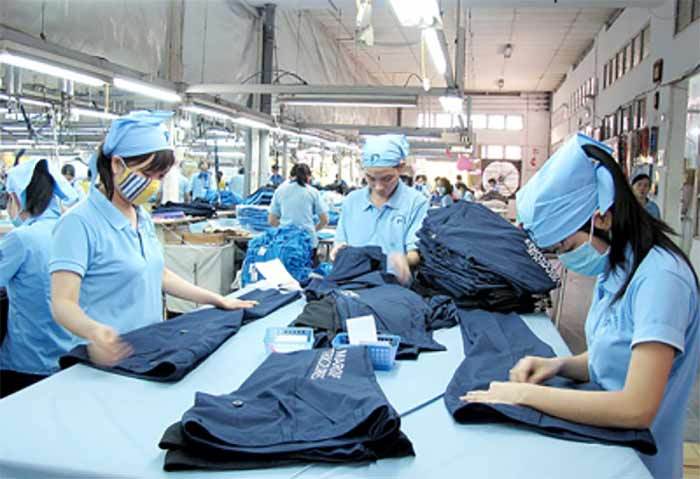At the end of 2019, when the Covid-19 epidemic had not yet broke out worldwide, the World Bank (WB) gave a bright outlook for the Vietnamese economy.
In its report on the Vietnamese macroeconomics review, the WB affirmed: “Dark clouds continue to pull in the global economy with lower economic growth and trade volumes than expected for 2019. However, the sun is still shining in the Vietnamese economy with a forecast of 6.8% growth in 2019 - only 0.3 percentage points lower than in 2018”.
Growth is affected
 |
|
We used to set a goal of completing the country's industrialization by 2020 but then missed it. That lesson must be analyzed and dissected from now on.
|
In fact, the positive comment of the WB is not unfamiliar to Vietnam in recent years, even though 11 years ago, this organization calculated in the 2009 Vietnam Development report that Vietnam lagged behind in economics by 51 years compared to Indonesia, 95 years behind Thailand and 158 years behind Singapore.
We used to set a target of completing the country's industrialization by 2020 but failed to realize it. That lesson must be analyzed and dissected from now on.
Vietnam's economic growth in 2019 is up to 7.02%, according to the General Statistics Office, and this is even higher than the World Bank's forecast, exceeding the target of the National Assembly and among the highest in the world and the region. .
High growth, though not the only measure of development and prosperity, in some sense demonstrates Vietnam's desire to catch up with the economic gap with other countries.
However, regrettably, in 2020, the Covid-19 epidemic spreads around the world, forcing countries to blockade, economies to close and isolate, supply chains are broken and demand plummets ... severely hurting export-dependent economies like Vietnam.
Economic growth this year, according to the Ministry of Planning and Investment, is expected to face many difficulties due to the Covid-19 pandemic and is estimated at only 1.69 - 2.12%, much lower than targets set from the end of last year. Although this forecast growth is positive while many countries forecast negative growth, this rate is still the lowest since Doi Moi (renovation).
According to economist Nguyen Dinh Cung, the growth rate estimated by the Ministry of Planning and Investment will drag down Vietnam's growth performance: The average GDP growth in the period 2010-2020 is expected to be only 5.9%, lower than the average growth rate of 6.4% for the whole period.
Thus, the economic slowdown of 2020 - the year of Covid-19 pandemic - has had a significant impact on Vietnam's growth, and the World Bank's praise must be only for 2019.
The middle income trap set up
 |
|
|
Vietnam’s economic achievements over the past three decades are proud that no one can deny. Globally, Vietnam has brought the largest proportion of the population in a country out of poverty, from around 60% in the 1990s to a few percent recently.
We have to look at reality, at our strengths and weaknesses in relation to countries in the region or in the world instead of just ourselves in the past.
In 2008, when GDP per capita reached $1,070, Vietnam officially set foot in the group of middle-income countries. Last year, per capita GDP was about $2,700, ie an increase of about $1,600 in more than 11 years.
To move up to a high average income of $4,000/person, GDP must increase to $400 billion, from $266 billion last year. If the average growth is about 6-7%, it will take 10 years to achieve that number.
The problem is that all roads are never flat.
The Covid-19 pandemic has had a heavy impact on an export-dependent economy like Vietnam.
In 2014, Japanese professor Kenichi Ohno, who has been with Vietnam for many years, issued a warning: “The middle income trap is no longer a distant threat, but has come true in Vietnam”.
He pointed out 5 symptoms, of which the most important is slowing growth. In a populous country with young population like Vietnam, with 70% of the population under 35 years old, according to the WB, when growth is slow to 5-6%, the mood of the whole society becomes bleak. The country goes through a period with a deflated real estate bubble, inflation, bad debt and widening the income gap. "If growth declines further, Vietnam will have to face aging, social security burdens and other social problems without ever achieving high incomes".
Aspiration… 25 years
Recalling Mr. Ohno's warning to see how fortunate and hard Vietnam has been to maintain GDP growth of over 7% in 2018 and 2019.
Growth, anyways, is the main driver that helps us narrow the development gap with other countries. Without growth, like this is in this year of Covid-19 pandemic, how do we catch up with them?
According to Vietnam 2035 report, with the highest growth scenario of over 7%/year, Vietnam's GDP per capita in 2035 will be equivalent to the income of South Korea in 2002 or Malaysia in 2013 and catch up with Indonesia and the Philippines.
Unfortunately, that average 7% growth never lasted long. The period of highest growth was in the 1990s, when the country just performed renovation and door-opening policies, and the economy exploded like a compact spring. And later, the average growth rate of per capita income was 5.5% per year in the period 1990-2014, according to calculations by the Vietnamese Government and the WB.
Thus, Vietnam’s economy and per capita income still have very large gaps with those of many neighboring countries, while the risk of middle income trap exists.
According to the World Bank, high-income economies are those with GNI per capita from $12,536 or more. With a per capita GDP of about $2,800 today, and its goal of becoming a high-income economy by 2045, Vietnam still has too much work to do in the next 25 years.
The population is expected to grow to 120 million by 2050. A growing middle class currently accounts for 13% of the population and is expected to reach 26% by 2026, which means Vietnam is witnessing rapid change in terms of population and social structure.
Therefore, both the Vietnamese economy and society still have immense space for growth and development, to maintain "the sun still shine in the Vietnamese economy" if Vietnam can overcome internal and structural bottlenecks.
We used to set a goal of completing the country's industrialization by 2020 but then missed it. That lesson must be analyzed and dissected from now on.
Tu Giang
To be continued…

Private sector – an important driving force of VN economy
The private economic sector's strong development to become an "important driving force" of the Vietnamese economy and other economic achievements have the contribution of the Central Economic Committee.

VN economy has shifted to a new state: senior expert
Vietnam’s economy continues to obtain high growth rate, but Covid-19 has upset all the key tasks and goals of the government and local authorities at different levels.